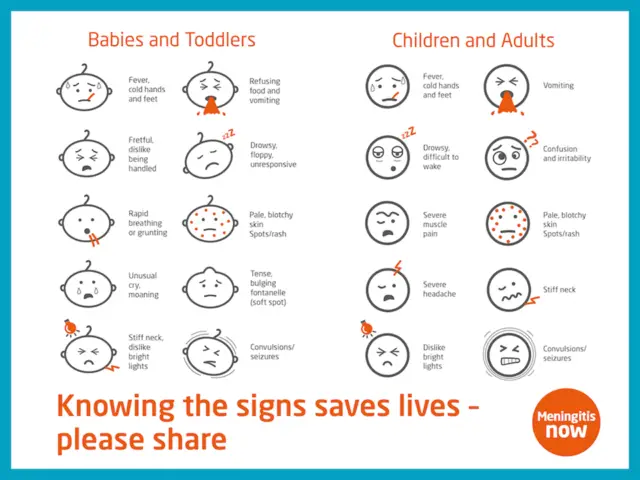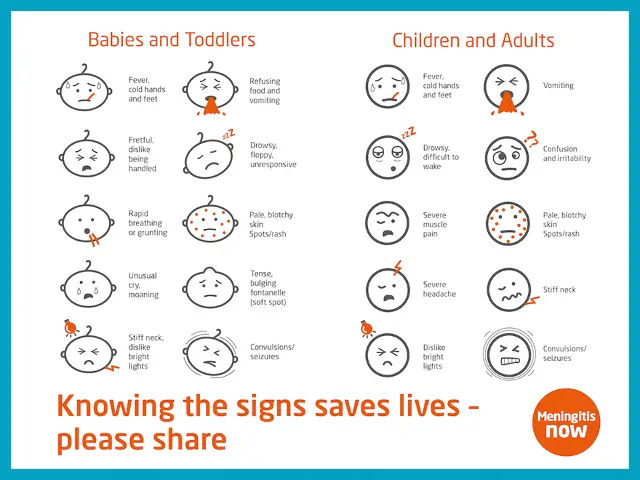Louisa Henson shares this latest news on behalf of GSK. Ed
Thirty-seven percent of parents in the South East think a distinctive rash is the first symptom of meningitis, despite the fact it often appears after other symptoms, or not at all[i], according to new research from GSK.
Tackle Meningitis Campaign
As part of GSK’s Tackle Meningitis campaign, in partnership with former England Rugby player, Matt Dawson, and backed by UK charities Meningitis Research Foundation and Meningitis Now, a survey of 2,000 parents across the UK revealed that awareness of the signs and symptoms of meningitis remains worryingly low despite 93% of parents in the South East believing that meningitis is a very serious condition.
The survey also flagged a number of other important barriers to greater awareness, including a lack of knowledge about the age ranges at risk and how the disease is passed on, with a third in the South East unaware that the disease is contracted from other people.
Caused by the onset of septicaemia
Eighty-one percent of respondents in the South East said that the rash was the most commonly associated symptom, but when asked what causes the rash, only 13% of parents were aware that it is caused by the onset of septicaemia (blood poisoning).
Respondents were less familiar with symptoms such as muscle pain (54%), vomiting (43%) and cold hands and feet (26%). When asked about strains, only a concerning 7% knew that there were six or more strains of the disease, highlighting the importance of being aware of the symptoms of the disease.
Vital that parents are prepared
Rob Dawson, Meningitis Research Foundation’s Head of Support said:
“This terrible disease is difficult to spot so it is vital that parents are prepared and act quickly if a sick child gets rapidly worse. Don’t wait for a rash. It doesn’t appear in all cases. Where it does appear a child is already in serious danger.
“Knowing the early symptoms and seeking medical help fast saves lives. We are also working with hospitals, doctors and other healthcare professionals to make sure they recognise and treat meningitis as soon as possible.”
Recognising the early signs
Liz Brown, CEO of Meningitis Now said:
“We would encourage anyone showing a combination of meningitis symptoms such as severe headache, vomiting, muscle pain and fever with cold hands and feet to seek medical immediately as these could be the early signs of meningitis and septicaemia.
“There is conflicting advice online, and a rash is often a later symptom so we would encourage everyone to familiarise themselves with the signs and symptoms and to trust their instincts if they suspect the disease. It could save a life.”
Rare, but potentially fatal disease
The Tackle Meningitis initiative is a campaign aimed at raising awareness of meningitis, a rare but potentially fatal disease. The results of the survey will be used to guide the direction of the Tackle Meningitis campaign throughout 2017 engaging with schools, rugby clubs and community organisations.
Despite rating meningitis as significantly more serious than other common conditions like German measles, mumps or chickenpox, only 15% of respondents in the South East said they knew more about meningitis than these illnesses. Younger parents aged 18-24 were twice as likely as older parents to feel they did not know much about any of the conditions mentioned.
More respondents (87%) associated young children with a risk of contracting meningitis than babies (82%), despite babies being the most at-risk group[ii]. Additionally, just over two-thirds saw adolescents and young adults as at-risk, despite incidence peaking again in this age group.
Most asked would act quickly
Encouragingly, when asked how quickly they would seek medical attention if they suspected meningitis, 89% of respondents in South East England said they would act immediately or within minutes, and over three-quarters (76%) said they would take their child straight to A&E.
The survey also found a disparity in the sexes, with more males than females (31% vs. 23%) saying they knew less about meningitis than other conditions, male parents three times less likely than female parents to know that the distinctive rash is caused by septicaemia and male parents less likely than female parents to seek help immediately (83% vs. 93%).
Matt Dawson commented,
“It’s clear that male parents feel they know less about meningitis and septicaemia than female parents and would tend to act less quickly.
“I fell into this category, and was unaware of some of the key symptoms to look out for beyond the distinctive rash. I urge mums and dads alike, families, teachers and young people to make sure you can recognise the symptoms early, not wait for the rash and act immediately.”
Symptoms
Symptoms of meningitis can develop rapidly. The first symptoms are usually fever, vomiting, headache and feeling unwell.
Limb pain, pale skin, and cold hands and feet often appear earlier than the rash (which doesn’t fade when a glass is rolled over it), neck stiffness, dislike of bright lights and confusion.
Although a rash is often the most well-known symptom, it is often a sign that the disease is advancing rapidly and it is therefore crucial not to wait to for it to appear before seeking medical attention.
Click on image to see larger version

[i] GSK, Tackle Meningitis Survey – regional data tables, November 2016
[ii] Meningitis Research Foundation. Meningococcal disease, http://www.meningitis.org/disease-info/types-causes/meningoccal-disease , Last accessed November 2016





